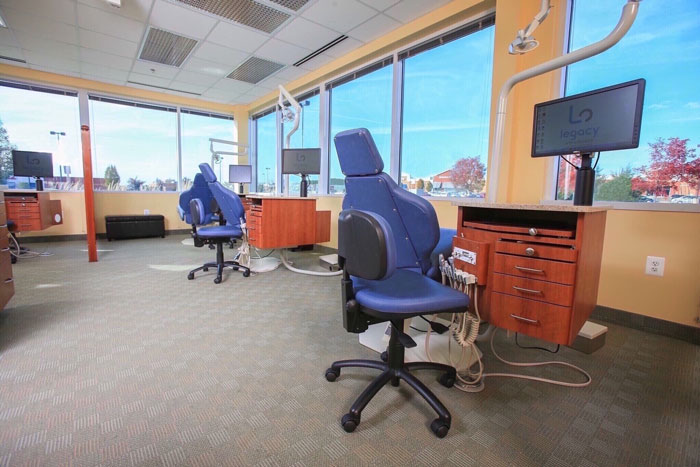Some Ideas on Legacy Orthodontics You Need To Know
Some Ideas on Legacy Orthodontics You Need To Know
Blog Article
10 Simple Techniques For Legacy Orthodontics
Table of ContentsNot known Facts About Legacy OrthodonticsSome Known Factual Statements About Legacy Orthodontics The Greatest Guide To Legacy OrthodonticsLittle Known Questions About Legacy Orthodontics.The Best Guide To Legacy Orthodontics
At Advanced Orthodontics, we provide clients with a all natural treatment experience. In enhancement, we offer adjustable treatment routines, versatile payment choices and an enjoyable, pleasurable experience. leesburg orthodontics. Call ( 480) 357-4900 today for more details and timetable a visit.An orthodontist is a dental professional educated to detect, prevent, and deal with teeth and jaw irregularities. Orthodontists work with people of all ages, from children to grownups.
Malocclusion, or misaligned teeth, can result in dental issues, including dental cavity, gum illness, and challenging or excruciating chewing. However not everyone is born with straight teeth. If you have a bad bite or big spaces in between your teeth, you may wish to speak with a dental practitioner focusing on orthodontic care.
The Legacy Orthodontics PDFs
( Picture Credit Score: DigitalVision/Getty Images) Orthodontists make use of fixed and detachable dental devices, like braces, retainers, and bands, to transform the placement of teeth in your mouth. Orthodontic treatment is for oral irregularities, consisting of: Misaligned teethBite troubles, like an overbite or an underbiteCrowded teeth or teeth that are too far apartJaw misalignmentThe objective of orthodontic therapy is to improve your bite.
A healthy bite guarantees you can consume, eat, and speak appropriately. While you might believe of orthodontists as generally for kids or young adults who require braces, they can deal with oral troubles at any kind of age. Orthodontists participate in college, oral school, and orthodontic school. After graduation, they spend 2 or 3 years in an orthodontic residency program.
All orthodontists are dentists, but not all dental practitioners are orthodontists. Orthodontic residency programs offer extensive, focused direction for dental professionals. They focus on two locations: Exactly how to appropriately and safely relocate teeth Just how to appropriately direct development in the teeth, jaw, and faceOnce an orthodontist has actually finished training, they have the alternative to end up being board certified.
Legacy Orthodontics Fundamentals Explained
Imbalance, or malocclusion, is the most typical reason individuals see an orthodontist. It is hereditary and is the result of dimension distinctions between the top and reduced jaw or between the jaw and teeth. Malocclusion results in tooth overcrowding, an irregular jaw, or irregular bite patterns. Malocclusion is generally treated with: Your orthodontist attaches steel, ceramic, or plastic square bonds to your teeth.
If you have only minor malocclusion, you may be able to utilize clear braces, called aligners, as opposed to traditional dental braces (https://sitereport.netcraft.com/?url=https://www.legacyortho.com). Some individuals need a headgear to help move teeth into line with stress from outside the mouth. After braces or aligners, you'll require to wear a retainer. A retainer is a customized tool that maintains your teeth in position.
They can develop added space in the mouth without having to draw teeth. Orthodontists use cords, medical screws, or plates to sustain your jaw bone.
You might need to see an orthodontist if you have: Crowding or not adequate room for every one of your teethOverbite, when your top teeth come over your bottom teethUnderbite, when your base teeth are too far forwardSpacing or issues with gapsCrossbite, which is when your top teeth fit behind your base teeth when your mouth is closedOpen bite or a vertical gap in between your front base and top teethMisplaced midline, when the center of your bottom and upper teeth do not align Correcting an oral malocclusion can: Make attacking, chewing, and speaking easierImprove the symmetry of our face and your general appearanceEase discomfort from temporomandibular joint conditionsDifferent your teeth and make them simpler to clean, helping protect against tooth degeneration or dental caries It's often a dental practitioner that first notices misaligned teeth during a routine test.
All about Legacy Orthodontics

Throughout your very first orthodontic appointment, you'll likely have: An oral examPhotos taken of your face and smileDental X-raysPanoramic (360 degree) X-rays of your face and headImpressions to produce mold and mildews of your teethThese examinations will assist your orthodontist know exactly how to proceed with your treatment. orthodontist. An orthodontist is a dental practitioner who's had training to treat your teeth and jaw
Orthodontists may carry out surgery, exams,X-rays,and even more to assist you obtain a much more comfy, much healthier smile. An orthodontist is focused on your bite, so something like a cracked tooth would certainly be taken care of by a dental expert. Orthodontists are dentists but not all dental practitioners are orthodontists. Orthodontists are concentrated on your bite, or the way your teeth fit with each other, and the straightness of your teeth.
Ever asked yourself exactly how celebs constantly appear to have perfectly aligned teeth? Orthodontists are dental specialists who focus on dealing with irregularities in the teeth and jaws.
Fascination About Legacy Orthodontics

While dental braces are the most frequently identified orthodontic therapy, orthodontists have a diverse toolkit at their disposal. The particular technique picked depends upon the intensity of the click for source instance, the patient's age, and specific preferences. These reliable braces utilize a system of brackets bound to the teeth and attached by cables.
Clear aligners, like Invisalign, are a prominent option for people seeking a much more discreet treatment alternative. These detachable trays are personalized to gradually change the teeth's setting. Headwear might be made use of along with dental braces or aligners to use added targeted pressures, particularly for correcting jaw inconsistencies. In situations of slim jaws, palatal expanders can be used to create area for appropriate tooth alignment.
Report this page